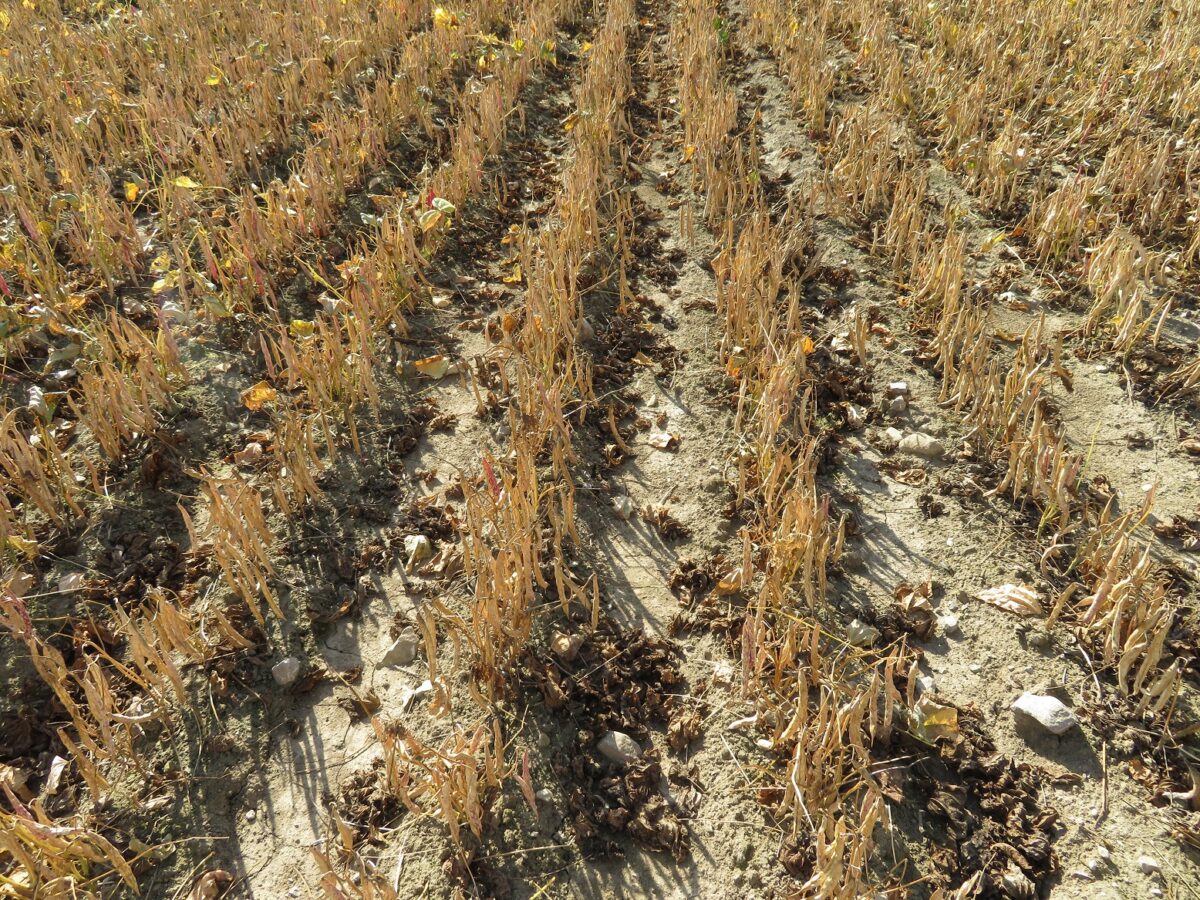Overview
Eragon LQ is the most common pre-harvest herbicide used in Ontario dry beans. It is rapidly absorbed by foliage and has mobility within the xylem of plants. It is a broadleaf weed control product and does not have appreciable activity on grass species.
Recommended use rate in dry beans: 146 mL/ha (59 mL/ac) with Merge at 1 L/ha (0.4 L/ac)
Interval Before Rainfall: No interval specified on label. Field experience has shown that performance of Eragon LQ is not affected when there is at least 1 hour between application and rainfall.
Pre-Harvest Interval: Do not harvest within 3 days of application. Dry down is expected within 7-14 days after application.
Maximizing the Performance of Eragon LQ
It is best to apply Eragon LQ when conditions are warm and sunny, and to spray between 9am and 5pm. Avoid spraying on cloudy days or into the evening. These application conditions are essentially the opposite of what is recommended for application of Reglone.
Eragon LQ does not advance the maturity of beans and does not lower moisture content of the beans. Studies have shown that the effectiveness of desiccation, yield and percent pick may all be negatively affected when Eragon LQ is sprayed too early. The label states it should be applied when 90% of pods have changed colour from green to yellow. Pod colour change is a better indication of maturity than leaf drop or leaf colour. Once a herbicide is applied, late pods will not continue to mature. If you split open a bean pod and the beans are green, its too early to apply Eragon LQ. Beans within pods must have their desired maturity colour before you apply Eragon LQ. Performance of Eragon LQ is often best when it is applied on the later side when bean plants have already dropped many of their leaves. This allows for improved coverage of plant stems, which are typically the most difficult part of the plant to dry down.
Achieving good coverage of the target plants is important. The label states the spray water volume should be 200 L/ha (21 gal/ac) but the manufacturer has suggested better efficacy can be achieved with 235 L/ha (25 gal/ac). For more tips on achieving good coverage see “Pro Tips for Pre-Harvest Sprays” at Sprayers101.com.
The label states that when applied on crops to be used for seed sale, seed germination may be affected if Eragon LQ is sprayed outside of the label-specified rates and timings.
Effectiveness of Eragon LQ on Weeds Present Prior to Harvest
There is limited public research comparing performance of pre-harvest treatments on different weed species. Dr. Peter Sikkema has conducted six trials over three seasons on edible beans and his results are summarized below. Regardless of treatment used, the expectation should be that the pre-harvest treatment will improve harvest efficiency, but it will not result in a complete “dry down” of target weeds.
Table 1. Visual Control of lamb’s-quarters, ragweed, pigweed and foxtail 8 days after application of various desiccant treatments
| Pre Harvest Treatment | Visual Control (%) 8 days after application | |||
| lambsquarter | ragweed | pigweed | foxtail | |
| Aim EC (47 mL/ac) + NIS1 (0.25% v.v) | 30 | 12 | 29 | 7 |
| Eragon LQ (59 mL/ac) + Merge (0.5% v.v) | 46 | 73 | 64 | 26 |
| Glyphosate 540 g/L (0.67 L/ac) | 29 | 17 | 38 | 63 |
| Ignite (1.2 L/ac) | 70 | 66 | 65 | 52 |
| Reglone (0.92 L/ac) + NIS1 (0.1% v/v) | 73 | 80 | 78 | 47 |
| Valtera (42 g/ac) + MSO Concentrate (1 L/ac) | 38 | 52 | 41 | 32 |
| 1 NIS = Non ionic surfactant (numerous products/trade names are available)
Source: Dr. P. Sikkema, 6 Trials: DB10D1A, DB10D1B, DB11D1A, DB11D1B, DB12D1A, DB12D1B. Weed Control Trials Research Report, 2010, 2011 and 2012. University of Guelph, Ridgetown Campus. |
||||
Confirm with your buyer before applying:
Bean dealers have restrictions in place on what products can be applied pre-harvest for certain bean classes or end markets. The producer must confirm with their dealer which pre-harvest products are acceptable on their dry bean crop.
Search for pesticide labels HERE. Review the OMAFRA Guide to Weed Control – Pub 75 HERE.
References:
McNaughton et al., 2015 Can. J. Plant Sci. (2015) 95:369-375
Soltani et al., 2013 Can. J. Plant Sci. (2013) 93:871-877
